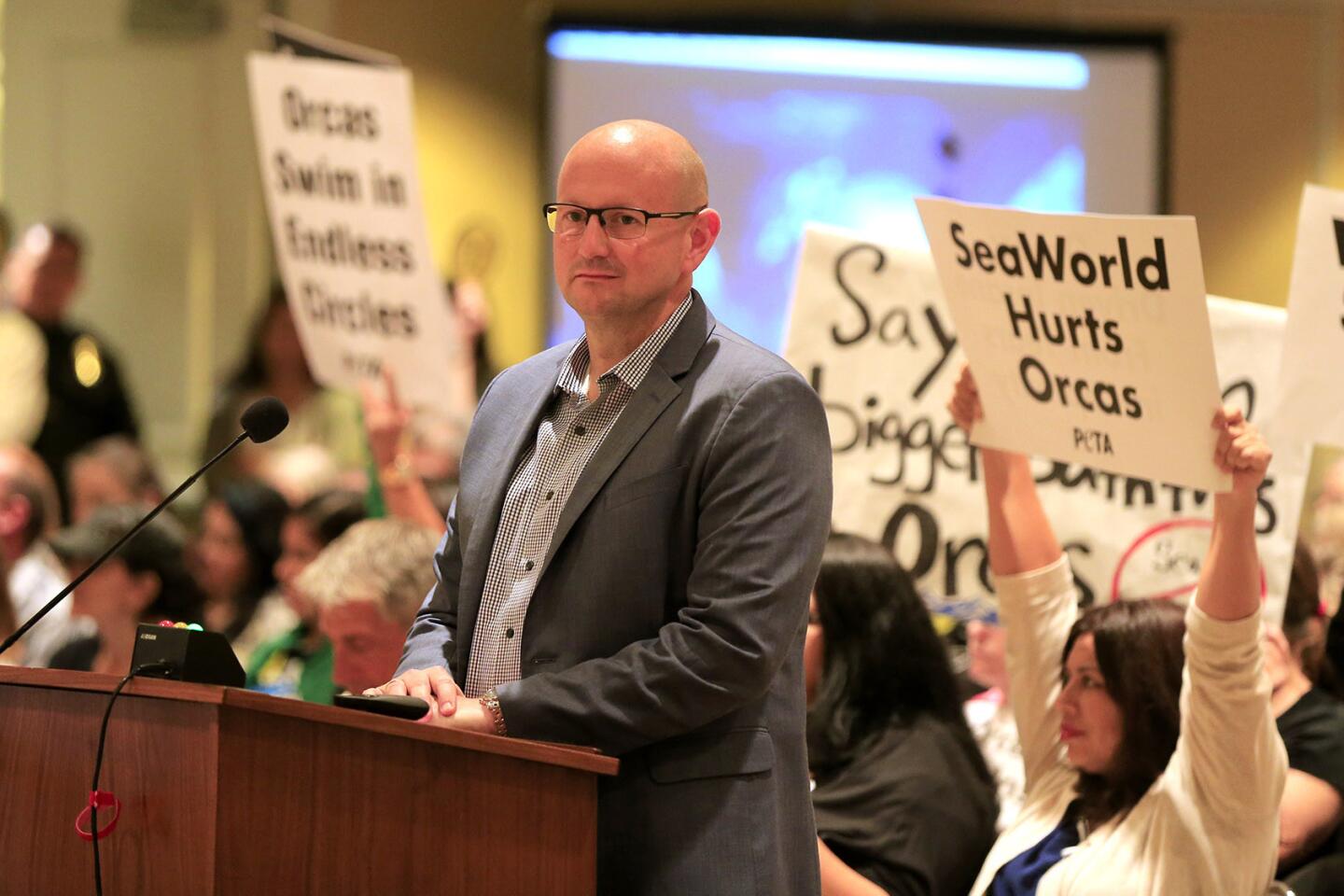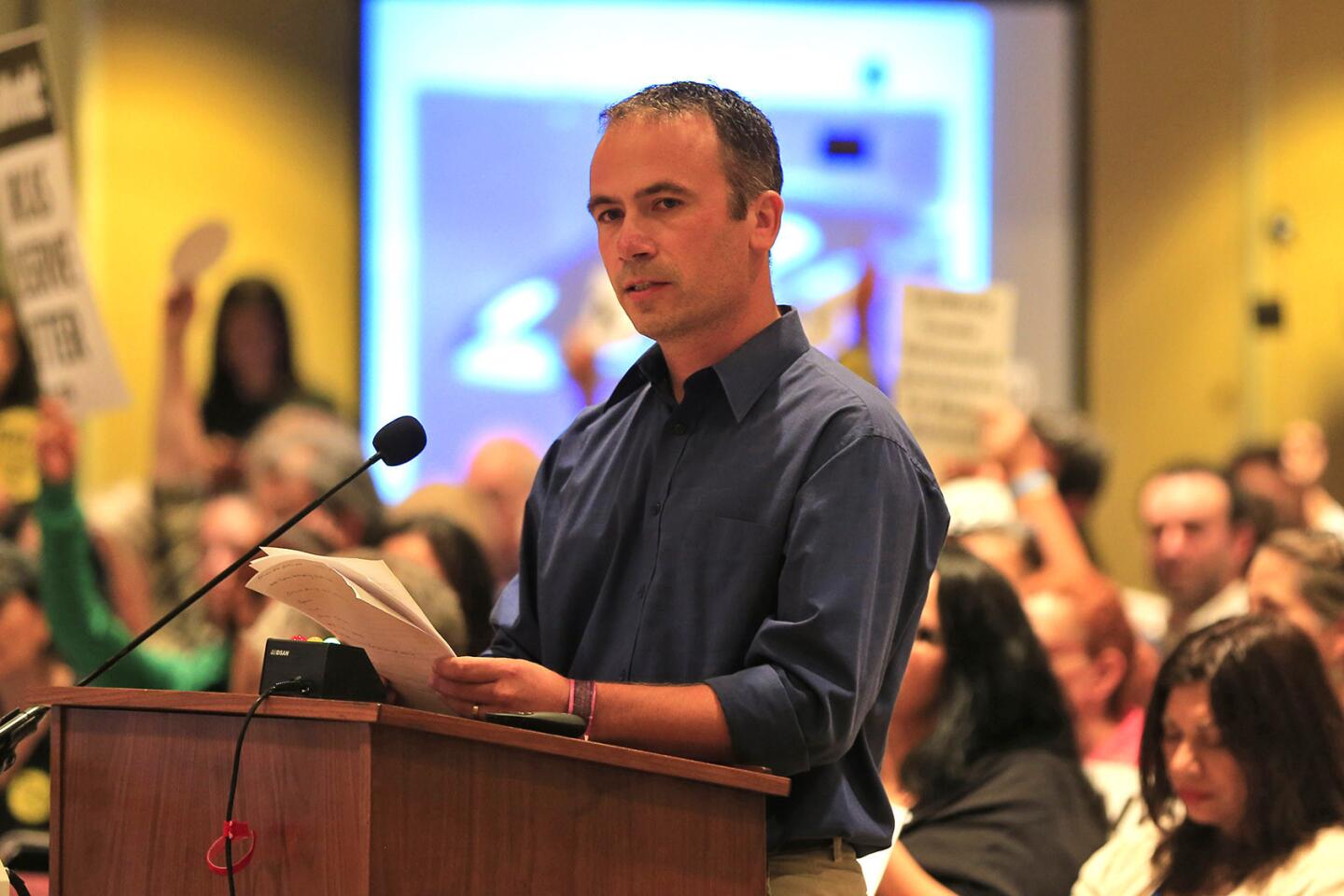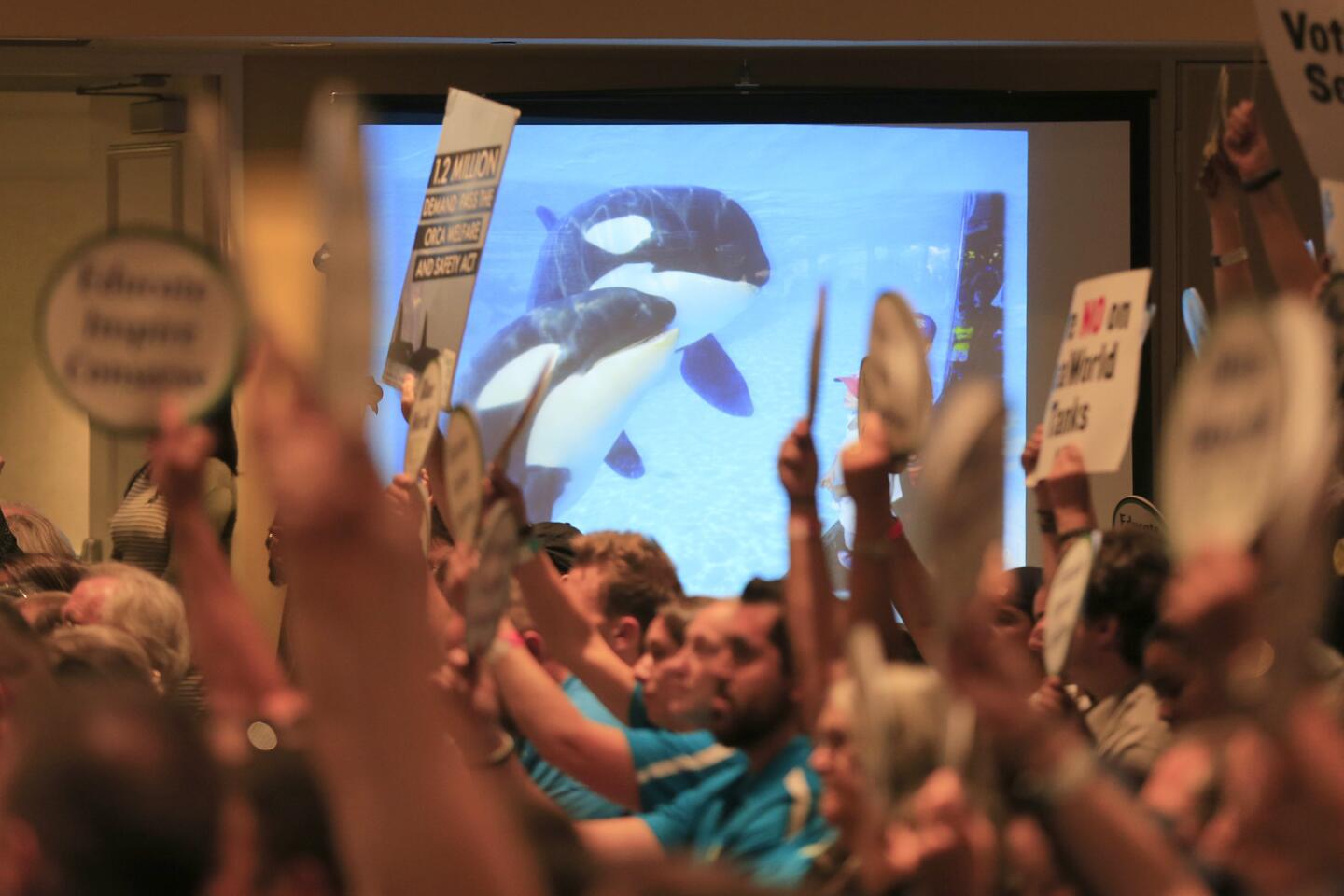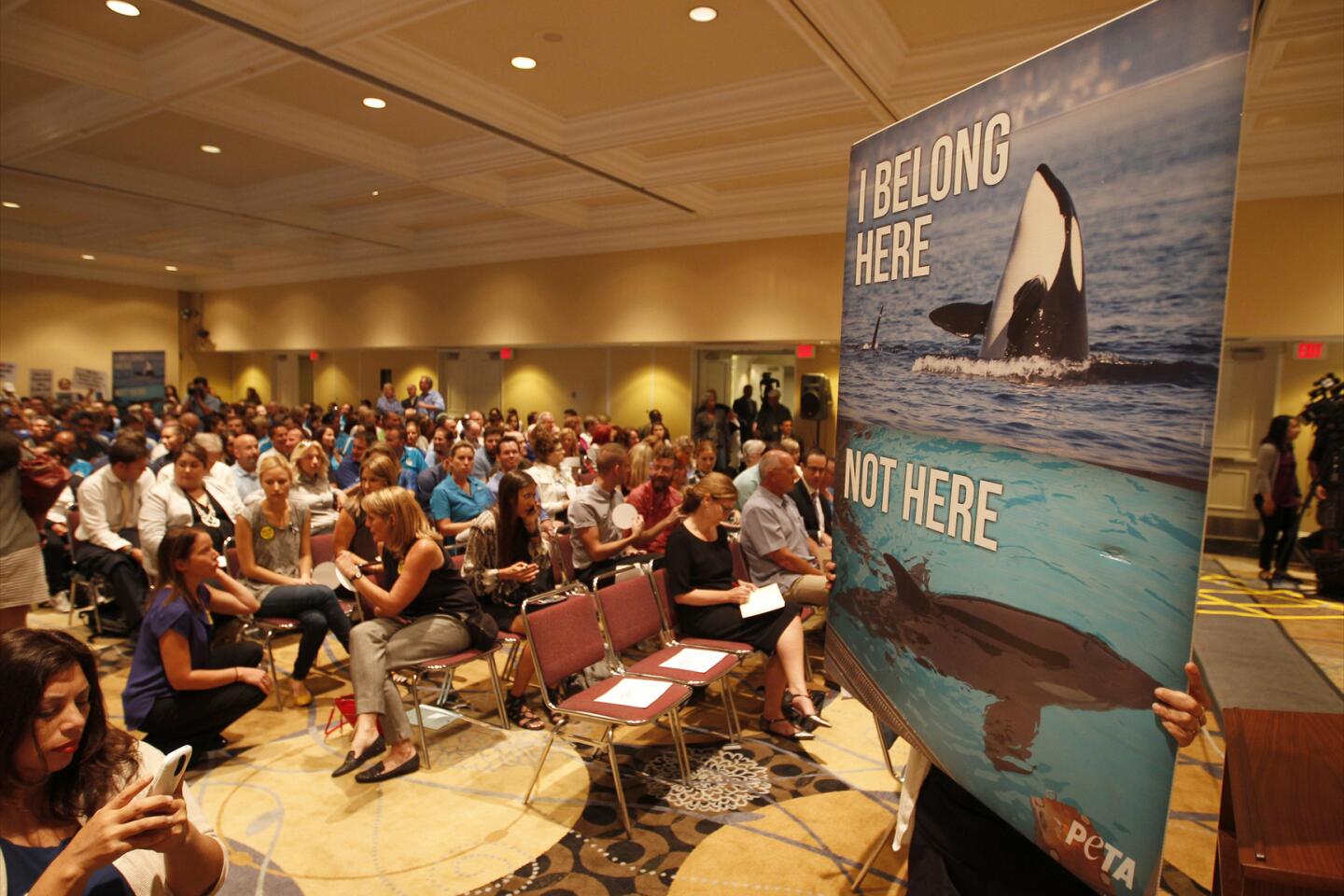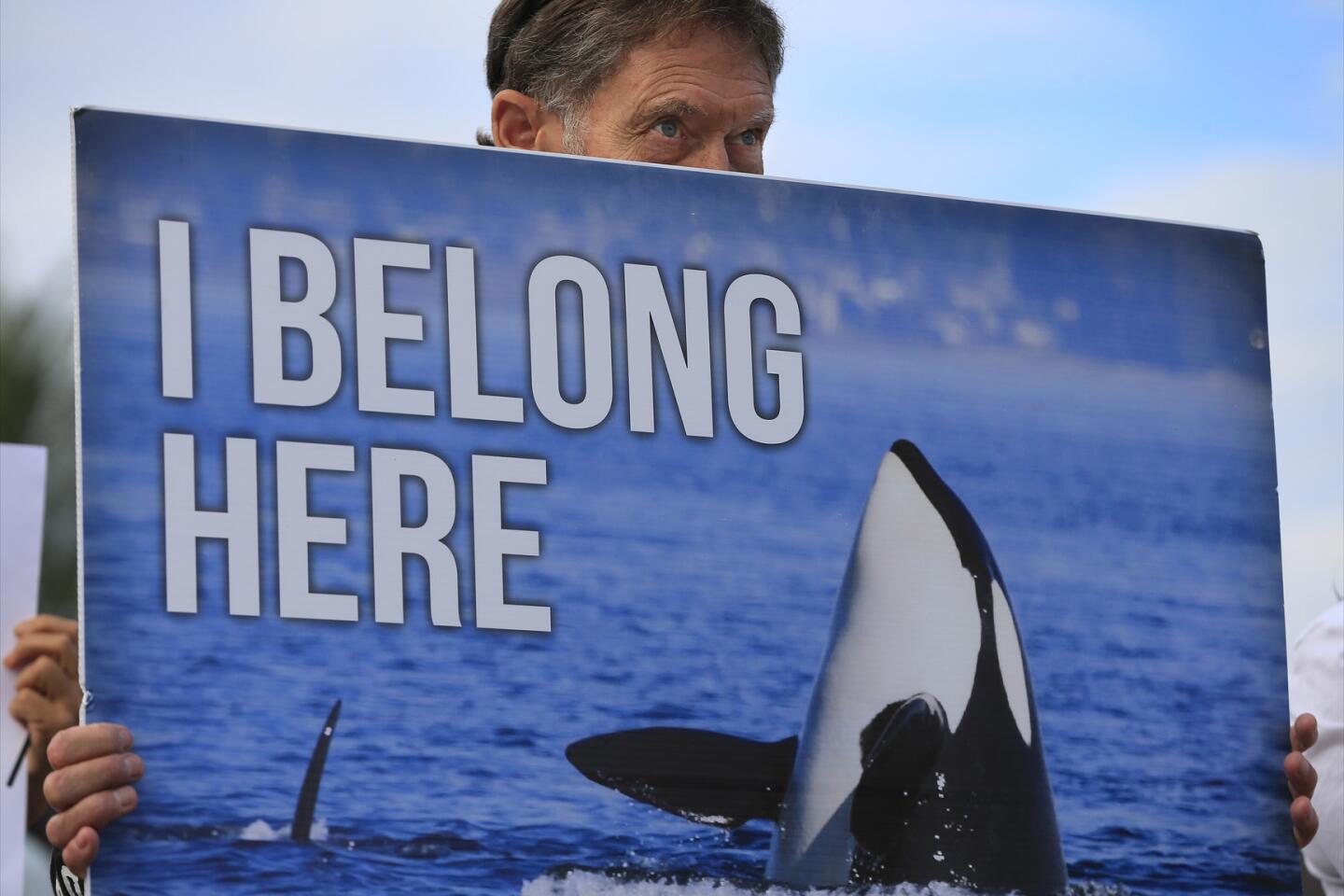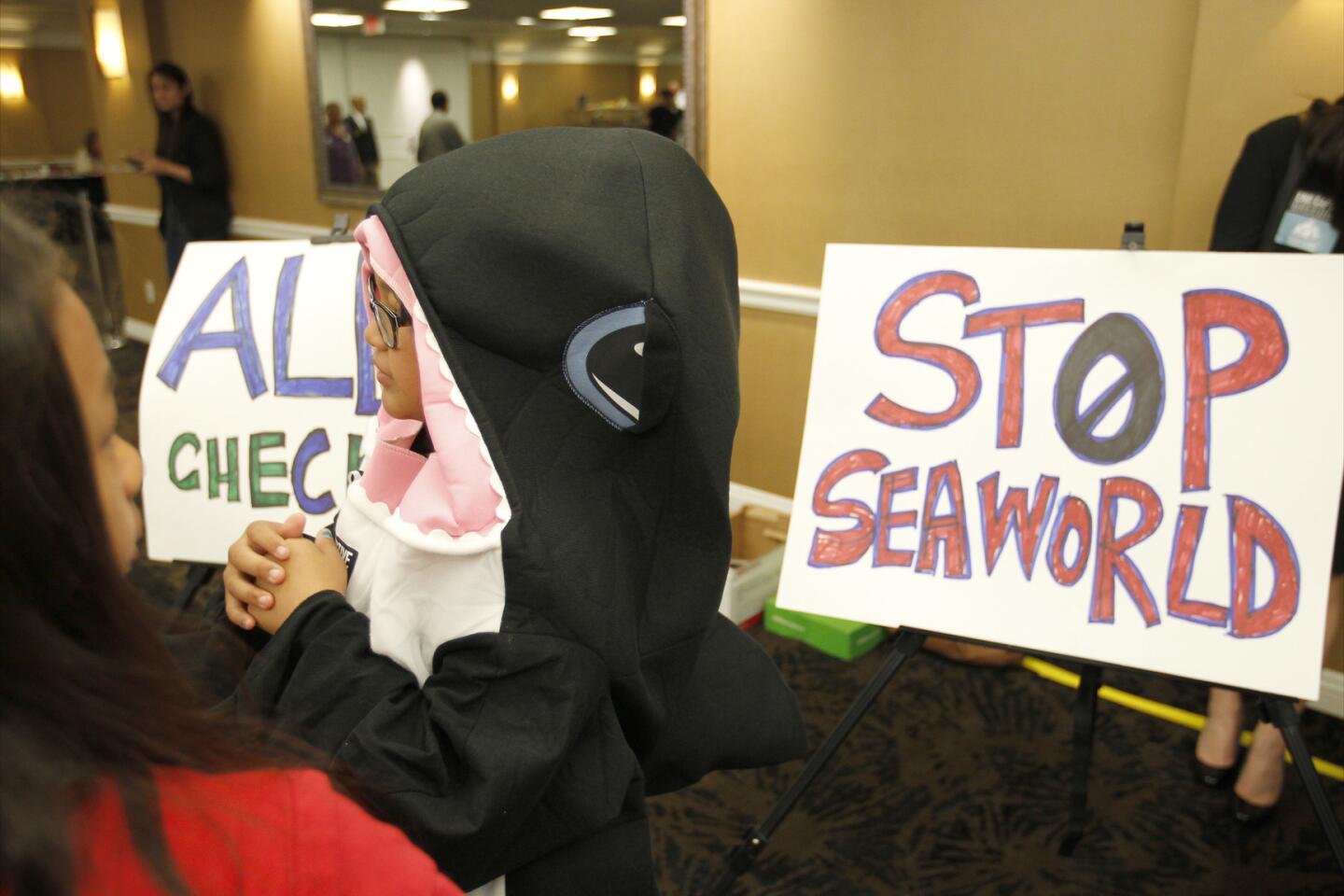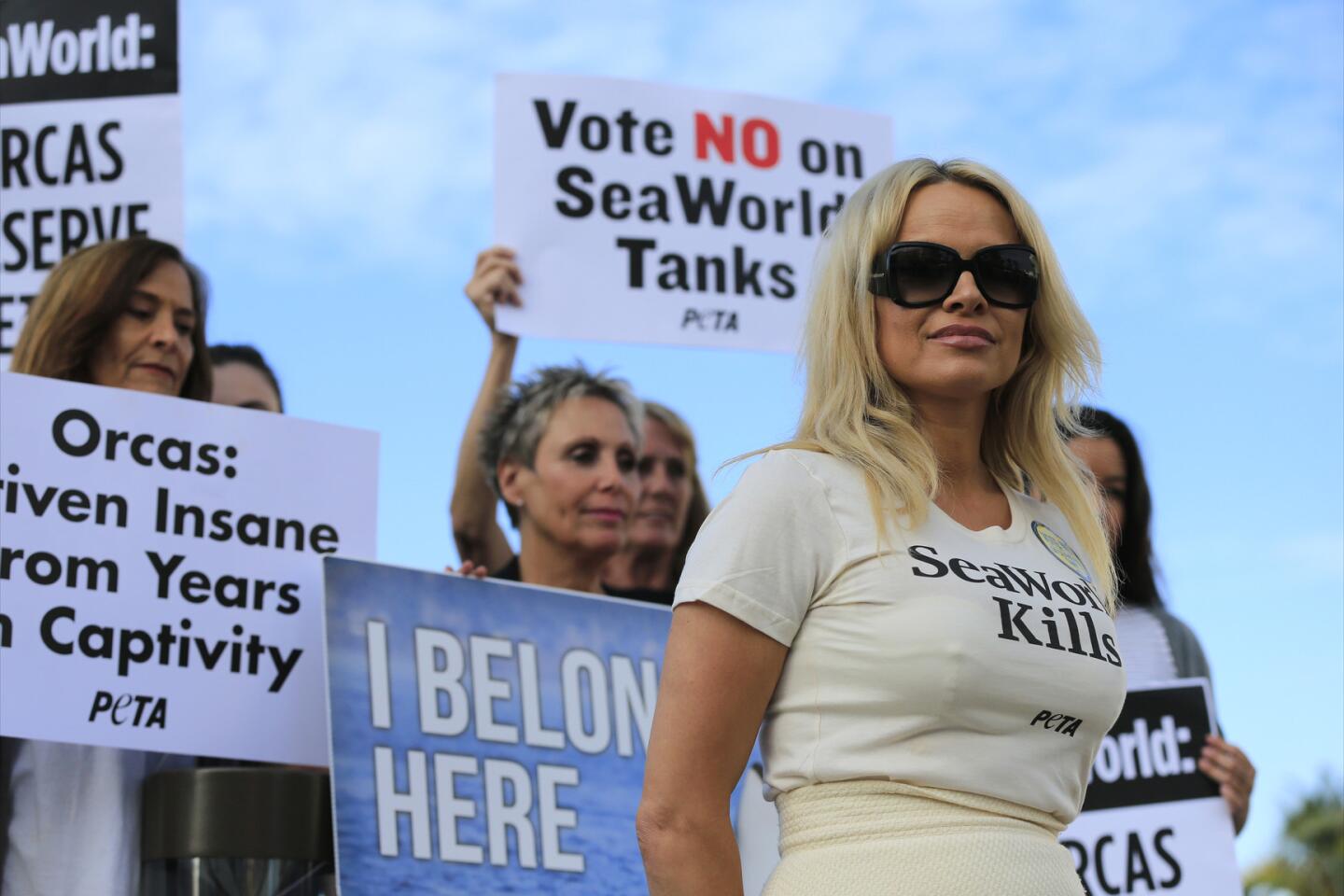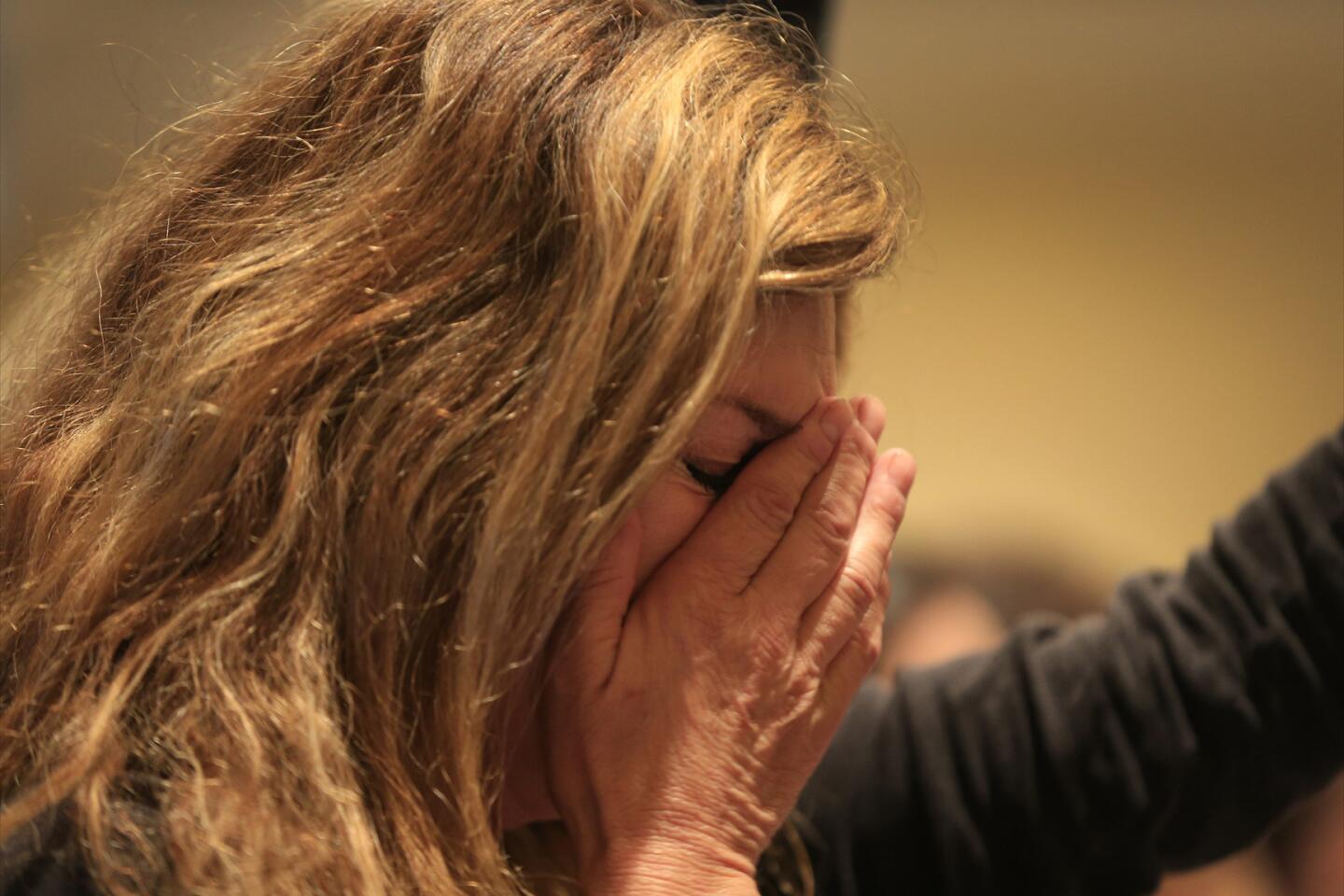Coastal Commission bans captive orca breeding at SeaWorld San Diego

Opponents gather in Long Beach as the California Coastal Commission is set to vote on whether SeaWorld San Diego should be allowed to build larger tanks for the park’s killer whales.
- Share via
The spectacular killer whale shows that have captivated audiences for decades at SeaWorld San Diego but infuriated animal rights activists could be coming to an end.
After an all-day meeting that drew hundreds of supporters and critics of the park, the California Coastal Commission moved to ban captive whale breeding and drastically restrict the movement of whales in and out of the park. Those were the conditions set as part of its approval of a plan to build an expanded holding facility for the existing orcas.
The state panel, which has authority over construction projects along the state’s coast, voted unanimously to approve the $100-million project that SeaWorld says will enhance the habitat of the whales and improve research opportunities.
But SeaWorld officials opposed the condition barring breeding, saying it would mean that the park’s population of 11 whales would be the last orcas held in the park.
“A ban on breeding would sentence these animals to a slow extinction in our care,” said John Reilly, president of SeaWorld San Diego, who rushed out of the building after the vote with other SeaWorld officials without further comment.
Loss of the killer whale shows would be a huge blow to SeaWorld, since it is the top attraction at the park.
“We are disappointed with the conditions that the California Coastal Commission placed on their approval of the Blue World Project and will carefully review and consider our options,” the park said in a statement after the vote. “Breeding is a natural, fundamental and important part of an animal’s life, and depriving a social animal of the right to reproduce is inhumane.”
The vote was hailed as a victory for animal rights groups, which have called on the park to stop its breeding program and release its whales to a seaside sanctuary, envisioned as a cove that would protect the animals but give them far more space to live out their lives.
Commissioner Dayna Bochco, who made the amendment to halt breeding and transfers from the park, said captivity is harmful to the whales.
“I can approve this project but only with conditions,” she said.
Commissioner Greg Cox, who voted for the project, said a bigger whale enclosure is better than the existing enclosure.
“Most people would agree that at least trying to increase the size of the habitat that they live in is better than what they live in now,” he said.
The testimony stretched for more than eight hours and included comments from marine biologists, activists, actress Pam Anderson, San Diego business owners and several children. Some speakers choked up with emotion and others gave their supporters enthusiastic high-fives.
The debate over the future of the park’s 11 whales has drawn so much attention that the Coastal Commission staff moved the meeting from Long Beach City Hall to the 400,000-square-foot Long Beach Convention Center to accommodate the crowds.
More than 650 park supporters, including hundreds of SeaWorld employees, and opponents waved signs and banners. Another 9,500 people logged onto a live stream of the meeting, according to commission staff.
SeaWorld brought dozens of employees on a bus from San Diego while People for the Ethical Treatment of Animals bused supporters in from Los Angeles.
During testimony, SeaWorld staff said the bigger enclosure would improve conditions for the whales and help park visitors better appreciate the orcas.
“We care for these animals as if they were our family,” said Hendrik Nollens, the head veterinarian at SeaWorld.
Opponents said the larger tanks are still a harmful environment for whales.
“Captivity is still captivity no matter how gentle the jailer,” said John Hargrove, a former SeaWorld trainer and critic of the marine park who wrote a book called “Beneath the Surface.”
Jared Goodman, director of litigation for People for the Ethical Treatment of Animals, said pressure from animal rights groups pushed the cities of Los Angeles and Oakland to ban bull hooks, the tools used by circuses to train elephants. The bans prompted Ringling Bros. and Barnum & Bailey Circus to announce that it will retire all of its elephants.
“SeaWorld is nothing but a marine circus, and the orcas are their elephants,” he said.
The commission’s vote allows SeaWorld to replace an existing 1.7-million-gallon holding facility with a new 450,000-gallon pool and a 5.2-million-gallon tank. But the amendment by Bochco essentially means the park cannot breed new whales and would likely limit the transfer of new whales.
SeaWorld lawyers told the panel that they believe the commission does not have the jurisdiction to restrict breeding and transfers. They said only the federal government can do that. It is unclear whether the park will take legal action to seek to have the decision overturned.
The expansion, dubbed Blue World, was proposed in the face of harsh criticism generated by the 2013 documentary “Blackfish,” which accused the park of neglecting and abusing its killer whales.
SeaWorld has denied the charges, but park attendance dropped 12% last year to about 3.8 million, according to one estimate, while shares of SeaWorld Entertainment, the parent company of the park, have plunged. Opponents accused SeaWorld of being motivated by a drive for bigger profits.
“How can anyone who has the whale’s health in mind say this is a bad idea?” Nollens said of the project.
But Ingrid Visser, head of the Orca Research Trust in New Zealand, blasted the project, saying whales in the wild swim an average distance of 138 miles per day and dive to depths of about 600 feet. The new tank will have a surface area of 1.5 acres and a depth of 50 feet.
“These new tanks do not meet these basic requirements,” she said. “No facility ever will.”
She echoed the sentiments of other opponents who say the orcas should be released to a seaside pen or sanctuary.
“If SeaWorld truly cared about their animals they would move them to a seaside sanctuary,” said Anderson, wearing a T-shirt emblazoned with “SeaWorld Kills.”
Eight of the 11 orcas at SeaWorld were born in captivity, and the other three have spent many years in the park. SeaWorld officials say the whales can no longer thrive in the wild.
It would not be the first time the Coastal Commission has imposed conditions on a project to protect captive animals. In 2002, the state panel, deciding on a roller coaster project at SeaWorld, required that the park shield its whales and dolphins from the noise generated by the attraction.
Other conditions proposed by the commission staff call for SeaWorld to reduce the effects of noise, traffic and runoff caused by the project.
ALSO:
What’s next for Shamu? SeaWorld stock falls after orca vote
SeaWorld blames weather, reputation attacks for latest attendance dip
‘Jackass’ star Steve-O gets jail for his over-the-top protest against SeaWorld
More to Read
Inside the business of entertainment
The Wide Shot brings you news, analysis and insights on everything from streaming wars to production — and what it all means for the future.
You may occasionally receive promotional content from the Los Angeles Times.
